The Natural Aquarium: Make a Small Turtle Tank Habitat
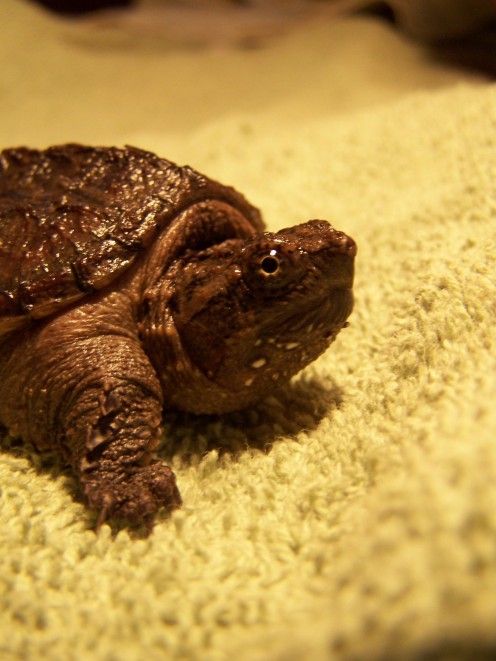
Create a Naturally Filtered Turtle Habitat
Turtles make wonderful pets when they are properly planned for. With a few supplies, your turtle will live a long, healthy and happy life. This article will teach you just one way to set up a baby turtle habitat. You will of course need to upgrade the system, as your turtles grow larger. Also, make certain your turtles cannot climb out of their new habitat.
© Copyright Notice ©
My photographs are mine, taken by me, with my camera. You may use them for personal reasons (desktop backgrounds, personal websites or you can print them for personal use.)
If you choose to use them on websites I require a link back to my HubPages. You may link to my profile or to one of my Hubs.
You may not use them without my permission or for profit.
I sell my art and if you are interested in purchasing it send me a message.
ALL of my articles are MINE and you may NOT use them for anything but reading on my page.
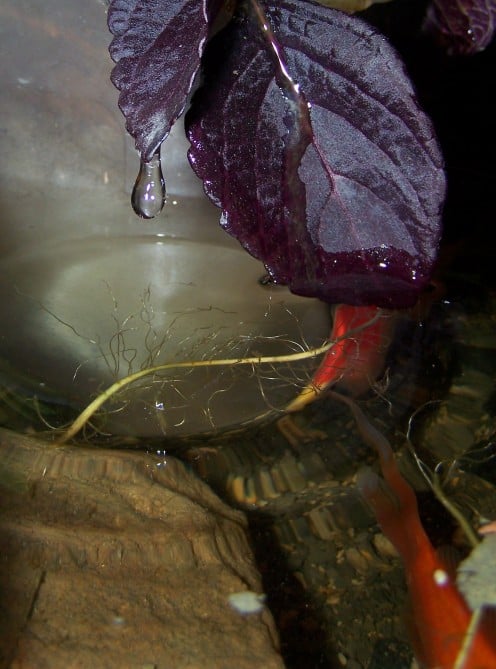
Supplies List:
- Plants
- Synthetic batting or Lava rock
- Large Rubbermaid container
- Medium Rubbermaid container
- Fountain pump
- Activated carbon (optional)
- Sand
- Reptile humidity fogger (optional)
- Reptile light
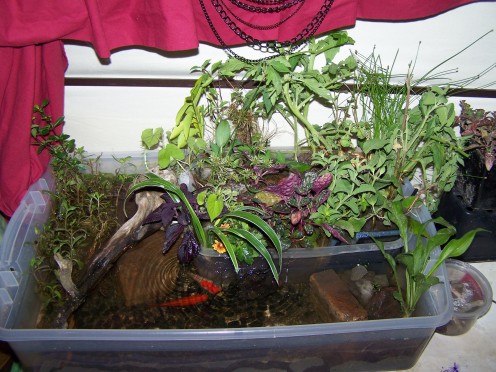
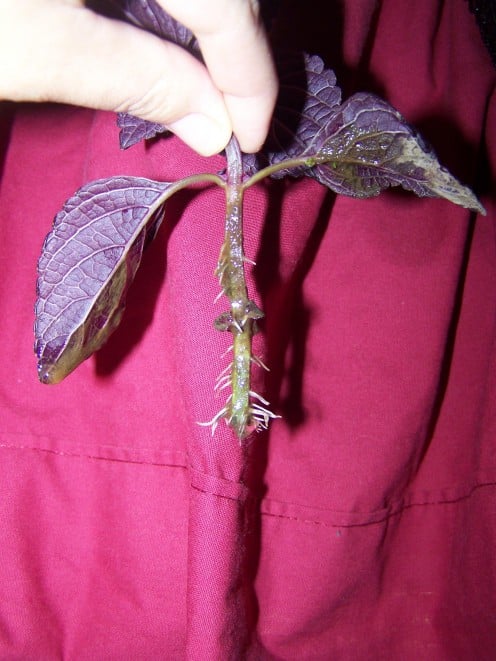
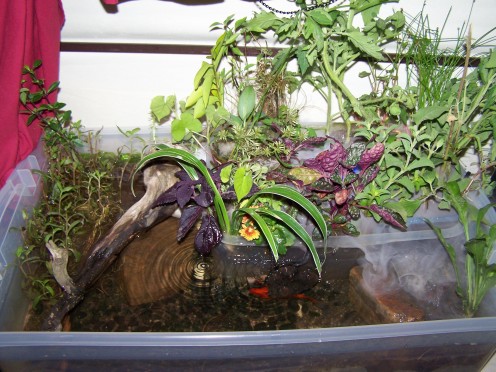
Introduction to Bilogical Filtration
Why use biological filtration? There are many reasons to choose biological filtration for your turtle and tropical fish aquariums. One of the main reasons being, biological filtration grows with your system’s bioload.
Plants naturally seek out and remove harmful chemicals from the water. As any turtle owner knows, turtles produce more than their fair share of harmful chemicals!
The down side to biological filtration? It has to grow before it begins to work.
Your fish and turtles do not appreciate sitting in urine, feces and other nasties whilst you’re “going green” with their filtration.
If fully cycling your tank before adding animals is not an option due to pond leaks, broken aquariums or sick fish — please use activate carbon until your biological system is stable. By the time the carbon loses its effectiveness, your system should be close to cycled. Keep up with water tests and changes until your biological system has matured enough to handle the bioload.
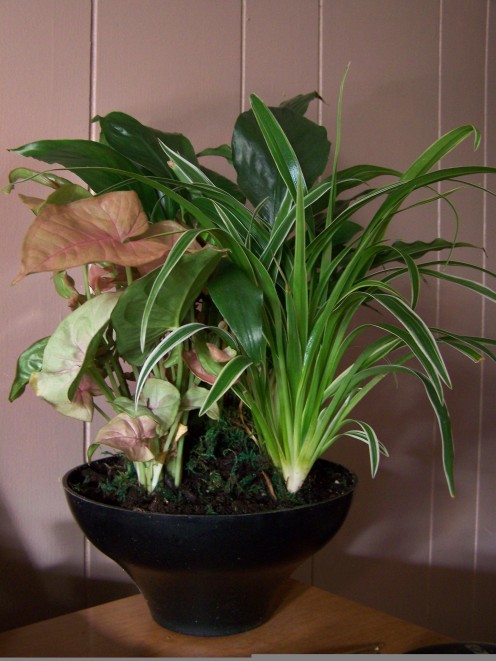
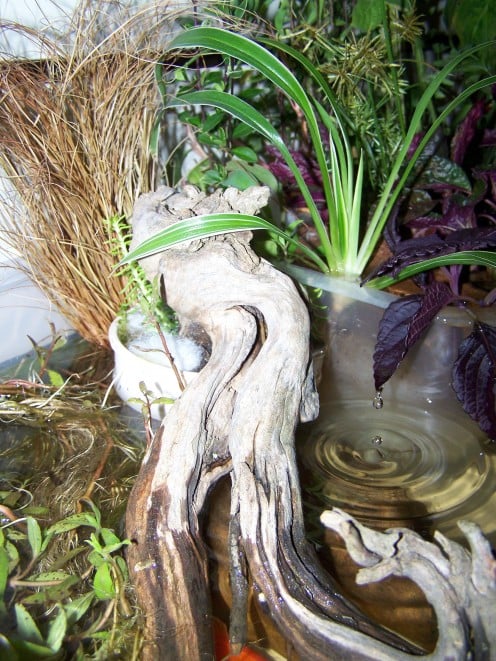
Biological Filtration Plant List:
Any plant that can be grown hydroponically will work as an aquarium filter plant. The plants you decide to use to filter your aquarium will depend on various factors.
I am successfully using my biological filter as a low tech hydroponic grow system for different herbs.
Newly set up systems should be planted with fast growing species in order to keep up with ammonia spikes. These spikes will normally be found in cycling aquariums, those recently stocked or when something kills off too many beneficial bacteria.
Good, fast growing filter plants include:
- Bladderwort
- Parrot’s feather
- Bacopa
- Cardinal flower
Slower growing species added at the same time will eventually get a foothold and contribute to excess nutrient uptake. It is advisable to always keep at least one fast growing species in the filter.
My Current Filter Plant List:
- Bichetii Grass (Chlorophytum laxum)
- Stevia (Stevia rebaudiana)
- Tomato (Lycopersicon esculentum)
- Serissa (Serissa foetida)
- Pineapple Sage (Salvia officinalis)
- Cinnamon Basil (Ocimum basilicum)
- Carex (Carex flagellifera) "Bronzita"
- Purple Waffle Plant (Hemigraphis)
- Polka-dot Plant (Hypoestes phyllostachya)
- Sweet Potato (Ipomoea batatas)
- Cardinal Flower (Lobelia cardinalis)
- Coleus (Coleus Blumei) "Dark Star"
As the system grows, I will be adding a larger variety of plants.
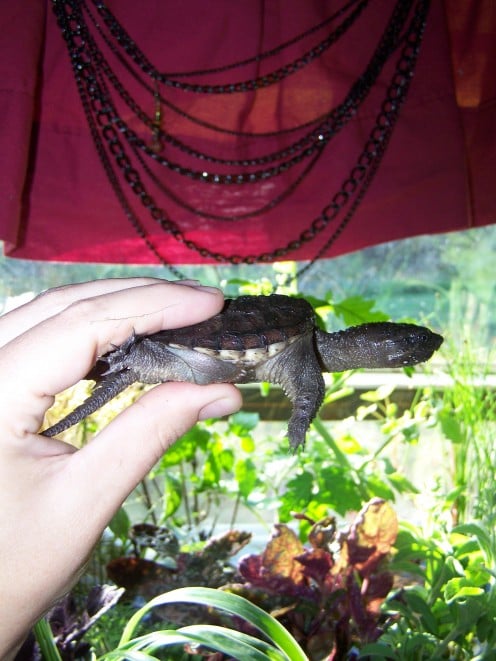
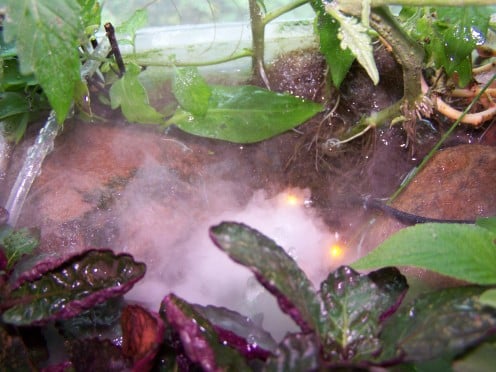
Setting Up a Bilogical Filter
As with fish, use chlorine free water in your turtle habitat.
Drill holes along the top of the Rubbermaid container to allow the filtered water to flow through. I left mine intact with rocks keeping it at a slight angle. Either way should be fine.
Drill a hole at the base of the medium Rubbermaid container. This hole should fit your submersible fountain pump's out let pipe. Use aquarium sealant to seal the seam. Allow this to cure completely before adding water.
Line with rinsed lava rock and then top that off with filter floss.
When the tank is set up, you will plant directly in the filter floss and lava rock.
Place your aquarium heater and fogger in the center of the biological filter. Make sure they are set deeply enough that they stay covered in water at all times .
Please Note:
If you cannot allow the tank to cycle before adding animals, add a couple of carbon filters over the intake area.
Do not leave the fogger on for a long period of time. Several minutes a day is fine, but if left on for extended periods, it may make your reptiles ill. This is not a problem in large habitats where the creatures can get away from the fogger. I purchased my LED reptile fogger on ebay.
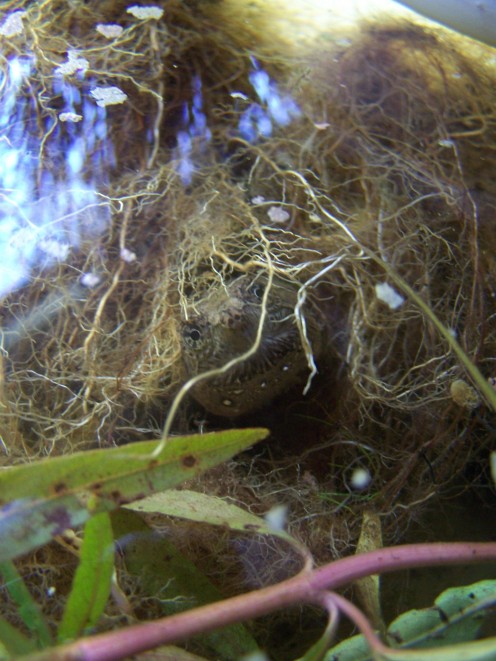
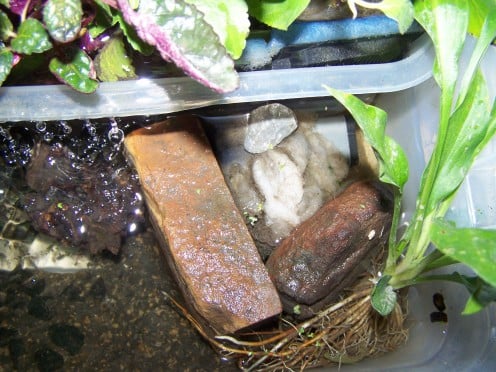
Setting Up the Turtle Tank
Use the largest Rubbermaid container as the actual turtle tank. Mine is shallow, with a 5 inch water depth. My snapping turtle does not care for deeper water so this is what he gets.
Cover the bottom of the tank with a 1 inch layer of clean sand. The turtle will appreciate the additional traction it provides.
I set my filter up in the far corner. This makes the actual access area shaped like a big "L". The filter allows water to fall from a couple inches distance. This is just right for oxygenating the water for fish and beneficial bacteria.
The tank is in a North Facing Window of our home. This provides ample light for the plants to grow at a fast rate but the water stays at a comfortable 70'ish degrees Fahrenheit.
Remember to provide your turtles and tortoises with the proper lights. The glass from your window blocks the wavelengths your turtle needs. You can purchase special reptile lights on Ebay, at pet stores or through a Google Shopping search.
Remember:
Provide at least one area where the turtles can leave the water. Even snapping turtles like to venture out, occasionally.
As your turtle grows, he will require larger living quarters. You are not forced to spend hundreds of dollars on a huge fish tank. You can easily create an affordable setup with livestock watering troughs or even kiddy pools. As long as it is safe, it can be used as a turtle habitat.









